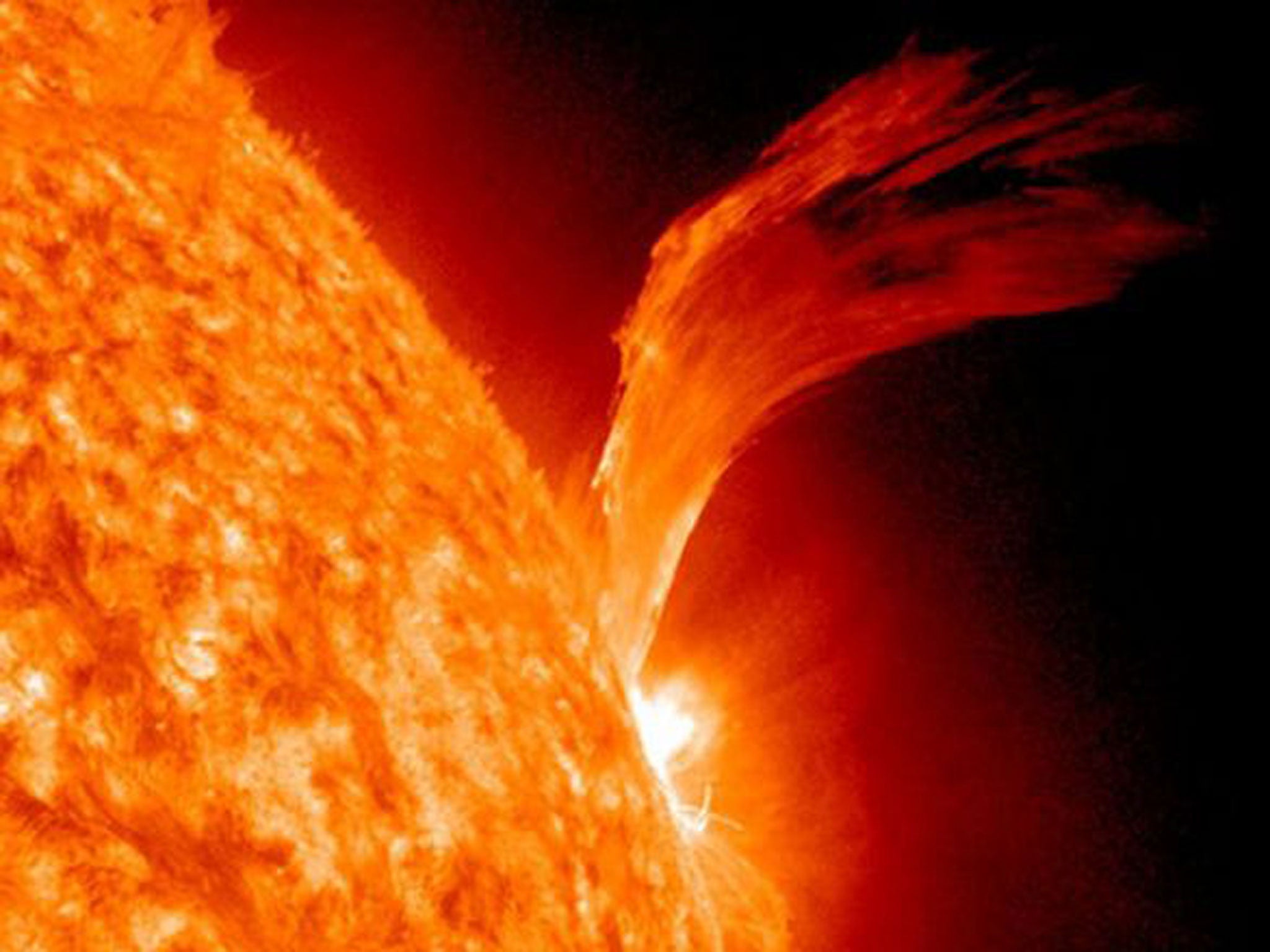Northern Lights expected to be more visible due to solar storm
Solar storm warning as plasma flare threatens geomagnetic disturbance on Earth

A solar storm could cause abnormally large geomagnetic disturbances through Christmas, meteorologists have warned.
A solar flare ejected from the Sun shot magnetically charged particles and plasma from the Sun’s atmosphere on Wednesday, which was expected to reach earth late on Thursday.
Sever solar storms can cause disruption to power grids and satellite services, however the most notable effect is typically an increase in intensity for the northern lights.
The Met Office’s Space Weather Forecast warned of a “moderate class flare” over the last 24 hours that could lead to a geomagnetic storm from late Thursday to Friday.
“This flare may have produced a Coronal Mass Ejection (CME) but further analysis is required if this will effect Earth,” the UK weather agency stated in its forecast.
“Further analysis is also required for a CME which left the Sun around 7.30pm GMT on 21 December, as this may have an Earth directed component.”
The forecast was extended into Christmas Day in an update from the National Oceanic and Atmospheric Administration on Friday morning.
The Sun has been unusually active over the last week, according to the European Space Agency’s (ESA) Space Weather Network, with several active regions producing solar flares.
While none of them will likely cause much noticeable disruption on Earth, scientists have warned of a so-called solar superstorm in the coming years that could plunge the world into an “internet apocalypse”.
Such an event would interfere with the Earth’s magnetic field, which protects from charged particles emitted by the Sun, known as solar wind.

The Sun’s natural waxing and waning life cycle means that approximately once every 80-100 years, these winds ramp up to an extreme weather event.
The last major solar storms occurred in 1859 and 1921, causing massive damage to the telegraph network at the time.
Global reliance on technology in the years since means the next major storm could cause far more disruption, with a study earlier this year warning that the robustness of undersea internet cables to such space weather events has not been tested.
Subscribe to Independent Premium to bookmark this article
Want to bookmark your favourite articles and stories to read or reference later? Start your Independent Premium subscription today.




Join our commenting forum
Join thought-provoking conversations, follow other Independent readers and see their replies
Comments